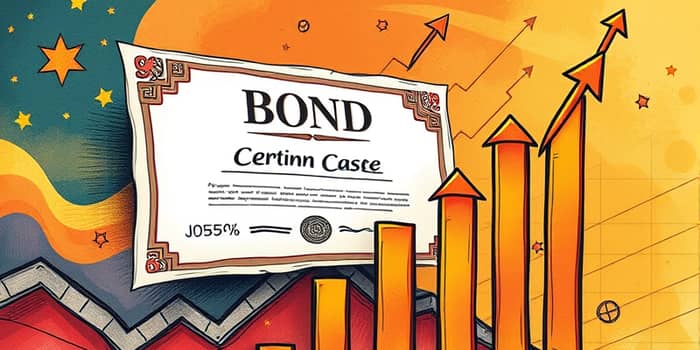
Convertible bonds occupy a unique space in modern finance, blending the characteristics of corporate debt with the upside potential of equity. Investors and issuers alike value these instruments for their multifaceted design and strategic flexibility. By examining their definition, structure, advantages, and drawbacks, readers can appreciate why convertibles have become a mainstay for growth-oriented firms and risk-aware investors.
In this comprehensive guide, we dissect every aspect of convertible bonds: from core terminology and mechanics to real-world examples and pricing methodologies. Armed with this knowledge, you will be equipped to evaluate convertible offerings, analyze their hybrid nature, and understand their role within diversified portfolios.
At their core, convertible bonds are debt securities that pay periodic coupons and promise to return principal at maturity. What distinguishes them is the embedded option granting bondholders the right—not the obligation—to convert the bond into a specified number of shares of the issuer’s common stock. This feature creates an option-like behavior embedded within debt, offering both downside protection and equity participation.
Typically issued with fixed maturities and set coupon rates, convertibles may also come in perpetual form, known as preferred convertibles. Their hybrid structure positions them between straight bonds and common equity, appealing to investors seeking balanced exposure.
Understanding convertible bonds requires familiarity with several key terms. The coupon represents the interest rate paid periodically, which may be fixed or variable depending on the bond indenture. Next, the conversion ratio dictates how many shares an investor obtains per bond; for a $1,000 bond with a $200 conversion price, the ratio equals five shares. The conversion price is the per-share cost underlying conversion, derived by dividing face value by the conversion ratio. Meanwhile, the bond floor refers to the value of the debt component absent any equity option. Finally, call and put provisions allow issuers to redeem bonds early or investors to demand early repayment under specified conditions.
The final conversion date marks the last opportunity to exercise conversion rights, which can differ from the bond’s maturity date. Together, these mechanics shape both the investor’s potential returns and the issuer’s financing cost.
By offering both bond and stock characteristics, convertibles appeal to a spectrum of market participants who value fixed income and equity exposure within a single instrument.
From an investor standpoint, convertible bonds deliver a blend of growth potential and risk mitigation:
However, these benefits come with trade-offs:
For companies, convertible bonds offer an attractive financing tool with multiple advantages. Issuers gain access to capital at delayed equity financing at lower dilution. By issuing debt that may convert later, they postpone share issuance until potentially higher valuations. Furthermore, coupons on convertibles are typically lower than those on standard debt, reducing immediate financing costs.
This hybrid financing is particularly popular among growth firms, technology companies, and those with less established creditworthiness. It enables these issuers to attract a broader investor base, blending the appeal of fixed income and equity participation in a single offering.
Concrete examples clarify the mechanics of conversion:
A company issues a $1,000 face value convertible bond with a conversion price of $200 per share. The conversion ratio is calculated as follows:
Therefore, each bond can be converted into five shares. If the share price rises above $200, conversion may be advantageous for the holder. Some convertibles include adjustment clauses that modify the conversion ratio in response to stock splits or extraordinary dividends, ensuring fairness for both parties.
Convertible bond pricing employs a dual valuation approach to pricing their components. Analysts first assess the straight bond value by considering the issuer’s credit quality, prevailing interest rates, and coupon structure. They then model the embedded equity option using option pricing techniques that incorporate the stock price, conversion terms, time to maturity, and expected volatility.
This methodology underpins strategies such as convertible arbitrage, where traders hedge equity exposure while exploiting price inefficiencies between the bond and the underlying stock.
Convertible bonds represent a dynamic market segment driven by issuers in technology, bio-pharma, and other growth-oriented industries. These securities can be structured as optional convertibles, where investors decide if and when to convert, or mandatory convertibles that automatically convert at maturity into equity. Perpetual convertibles, resembling preferred securities, carry no fixed maturity date, offering unique yield and conversion features.
Over recent years, convertibles have demonstrated resilience, sometimes outperforming both equities and traditional fixed income. Their hybrid nature allows participation in market rallies while tempering losses when equity markets decline, making them a compelling option for diversified portfolios.
Convertible bonds are powerful hybrid instruments that sit at the crossroads of debt and equity. They provide investors with an attractive combination of income and growth potential, coupled with built-in downside mitigation. Issuers, in turn, benefit from lower borrowing costs and highly flexible financing terms and structures that defer dilution until market conditions improve.
When evaluating convertibles, consider factors such as coupon levels, conversion ratios, issuer credit quality, and the outlook for the underlying stock. With a solid grasp of their mechanics and applications, convertible bonds can become a valuable component of a well-diversified portfolio, offering a nuanced balance of risk and reward.
References













